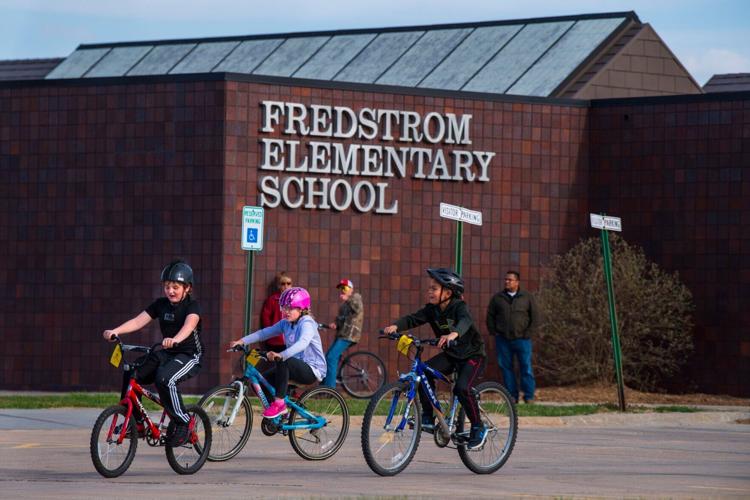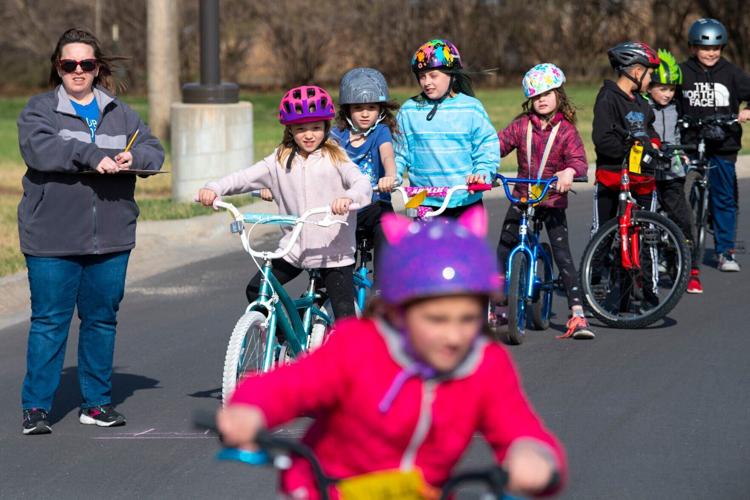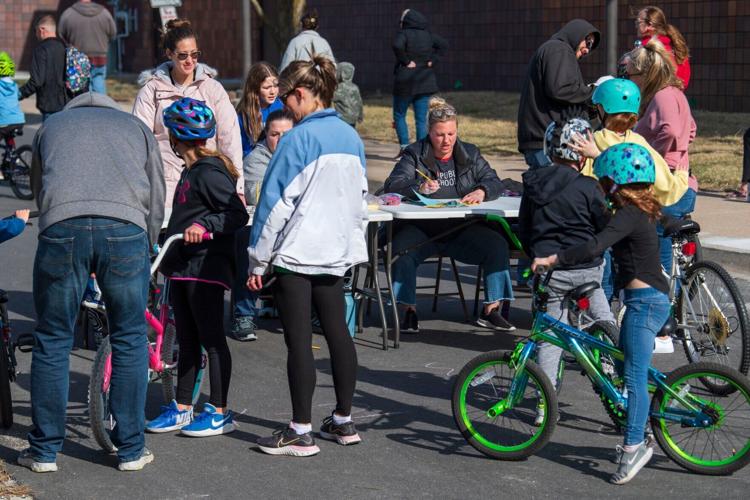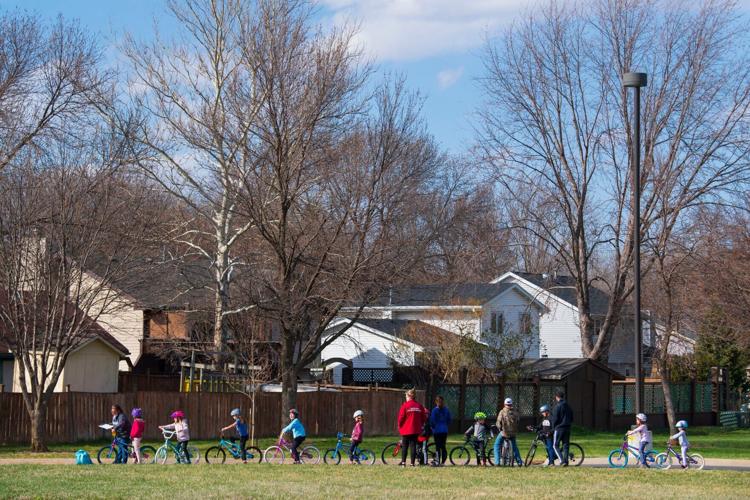Books, buses, bleachers and bathrooms: Nebraska schools have long shopping list with federal ‘rescue’ aid | Education
[ad_1]
OMAHA — Nebraska school districts are cashing in on the massive federal rescue package Congress passed last year to provide pandemic relief.
They’re buying everything from buses to bathroom fixtures, stadium bleachers and robots, but the most popular purchase is curriculum — the books, online resources and other materials for teaching.
The $492 million allocated to Nebraska districts through the American Rescue Plan Act is proving to be less of a rescue and more of a reward for getting kids back into in-person learning ahead of other states.
Some of the spending is clearly related to COVID-19 recovery and prevention, addressing mental health and learning loss, according to a World-Herald review of district spending plans.
People are also reading…
Congress wrote the spending rules so broadly that, with few exceptions, virtually any education-related expense can be justified. Congress said only 20% must be used to address learning loss. They put few restrictions on spending the rest.
Plattsmouth Community Schools’ plan includes installing bleachers on the visitors’ side of the district’s football stadium.
“It’s a little difficult to get adequate social distancing when you have one set of bleachers on one side of the field,” Superintendent Richard Hasty said. “The goal with the bleachers is to improve distancing between everyone.”
Hasty said the idea for bleachers came up while health officials were still recommending separating student groups to reduce disease spread.
“Obviously it came about during COVID, but that’s probably helpful regardless of what the health concern might be, to have people separated and distanced,” Hasty said.
More than two-thirds of districts — including Bellevue and several metro Omaha districts — indicated they’re buying curriculum, primarily in core academic areas of math, science, English language arts and social studies.
A smaller number of districts plan to buy social-emotional curriculum. Those are classroom lessons meant to socialize children by increasing their awareness of self and society, along with improving relationship and decision-making skills.
After curriculum, the most popular purchases are heating-and-air-conditioning units, followed by classroom technology — everything from whiteboards to iPads and robots that allow sick or quarantining students to participate remotely in the classroom.
Some districts are buying buses, SUVs and vans.
Others are renovating school kitchens and bathrooms, replacing school windows, expanding classrooms and weight rooms, adding playgrounds.
They’re hiring teachers, counselors, social workers, therapists and curriculum experts.
Some are replacing drinking fountains with bottle-filling stations or putting portable air filters in classrooms.
The money is from the Elementary and Secondary School Emergency Relief Fund — referred to as ESSER III and allocated through the 2021 American Rescue Plan. Districts have until Sept. 30, 2024, to spend their share of the funds.
Earlier rounds of ESSER funding were allocated through previous federal COVID relief measures, including the 2020 CARES Act.
Nebraska schools didn’t need rescuing as badly as schools in other states.
The state’s schools were among the first in the country to return to offering in-person learning. That meant students didn’t fall as far behind academically as their peers elsewhere.
Chad Aldeman, policy director for Georgetown University’s Edunomics Lab, said the funding has been beneficial but data show it might not have been as needed in Nebraska.
Only about 3% of Nebraska school districts have used money in the last round of COVID-19 relief funding, according to the U.S. Department of Education. Districts have spent 21% of ESSER II and 91% of ESSER I funds.
“There is still opportunity for them to spend that money, but it suggests that reopening wasn’t really based on the need for money,” he said.
Nebraska districts are spending much of it on normal school expenses or wish-list projects that otherwise would have required a bond issue or just remained on the back burner.
The allocations were based on Title I poverty funding, so high-poverty districts received the most money.
The Omaha Public Schools, for instance, got $194.4 million. About 78% of its students qualified for free or reduced-price school meals last year, according to the Nebraska Department of Education. The Elkhorn Public Schools, with 10% low-income kids and about one-fifth as many students, received $899,000.
That’s almost $3,800 a kid versus less than $85 a kid.
Lincoln Public Schools received $61.4 million in the third round of federal funding. The district targeted addressing students’ mental health needs and adding staff time to work with students who could use extra help to catch up in one or more subject areas.
LPS also plans to expand a pilot program known as Advancement via Individual Determination, or AVID, at more schools. It aims to prepare soon-to-be first-generation college students for life after high school.
Of the state’s 244 districts, two Nebraska districts declined the money: Cross County and Hayes Center. Five of them didn’t receive any ESSER III money at all: Elgin, Arthur County, Exeter-Milligan, McPherson County and Sioux County.
School officials in Cross County and Hayes Center didn’t return calls or emails to explain why they declined the funding.
David Jespersen, spokesman for the Nebraska Department of Education, said the five districts that didn’t receive any ESSER money had previously declined to receive Title I poverty funding from the government, in turn taking away their chance to receive any COVID-19 relief dollars.
These districts still received some funding from the portion of money the state received for itself, Jespersen said. On top of the $492 million being allocated to districts, Nebraska has nearly $55 million for statewide investments.
States weren’t allowed to cut back on state school funding and replace it with the aid. As a result, the federal money represents a significant boost above local school budgets.
Robert Moore, assistant superintendent of the Bellevue Public Schools, said the challenge in his district was to “find good ways to put that money to work for us.”
“When they say all of a sudden that you have $6.3 million, that’s a blessing and a curse,” Moore said of his district’s allotment. “It’s hard to spend that amount of money.”

Bike Rodeo 4.14
Madi Vancura waits for her turn on the obstacle course during a bike rodeo at Fredstrom Elementary School on Thursday.

Bike Rodeo 4.14
Link Colley navigates his way through an obstacle course during a bike rodeo at Fredstrom Elementary School on Thursday.

Bike Rodeo 4.14
Students cruise around the parking lot of Fredstrom Elementary School during the bike rodeo Thursday.

Bike Rodeo 4.14
Connor Wittrock (second from left) waits alongside other students during a bike rodeo at Fredstrom Elementary School on Thursday.

Bike Rodeo 4.14
Adrian Saure rides his scooter through an obstacle course during a bike safety event at Fredstrom Elementary School on Thursday.

Bike Rodeo 4.14
Henry Bredehoft, wears a dinosaur helmet during a bike rodeo at Fredstrom Elementary School on Thursday.

Bike Rodeo 4.14
Anakin King peddles to the finish line of an obstacle course during a bike rodeo at Fredstrom Elementary School on Thursday.

Bike Rodeo 4.14
Students ride around the parking lot during a bike rodeo at Fredstrom Elementary School on Thursday.

Bike Rodeo 4.14
Lily Madsen circles around a traffic cone during a bike rodeo Thursday at Fredstrom Elementary School.

Bike Rodeo 4.14
Students line up to take on an obstacle course during a bike rodeo Thursday at Fredstrom Elementary School.

Bike Rodeo 4.14
Students line up to check in to the bike rodeo Thursday at Fredstrom Elementary School.

Bike Rodeo 4.14
Students line up to take on an obstacle course during the bike rodeo, a safety event at Fredstrom Elementary School on Thursday.
[ad_2]
Source link






